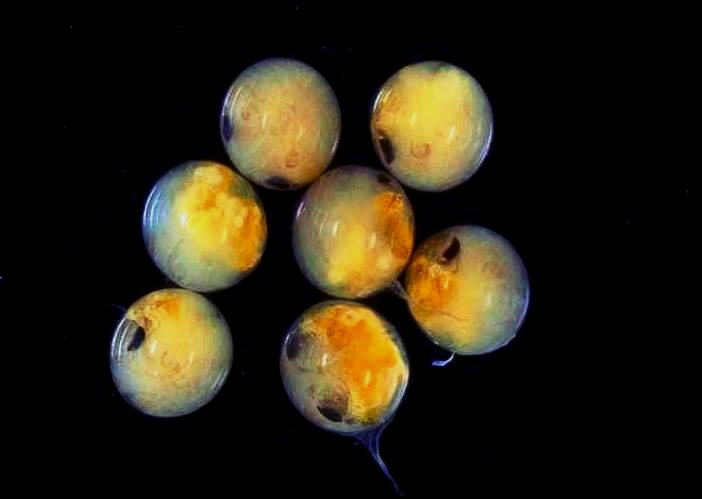|
Conchoderma Virgatum
''Conchoderma virgatum'' is a species of goose barnacle in the family Lepadidae. It is a pelagic species found in open water in most of the world's oceans attached to drifting objects or marine organisms. Description ''Conchoderma virgatum'' has a flexible, flattened, scale-less peduncle (stalk) which is attached to a solid surface, and a capitulum (body) with five smooth, four-sided plates, widely separated from each other and not clearly demarcated from the peduncle. The total length of this goose barnacle is about , half of which is the peduncle. Overall, the colour is grey, but there are some dark purplish-brown longitudinal streaks. Distribution ''Conchoderma virgatum'' has a cosmopolitan distribution, being found in all the world's oceans attached to a wide range of drifting and swimming objects, as well as benthic habitats. Ecology ''Conchoderma virgatum'' is found attached to a wider range of floating objects and nekton than goose barnacles in the genus ''Lepas''. This ... [...More Info...] [...Related Items...] OR: [Wikipedia] [Google] [Baidu] |
Lorenz Spengler
Lorenz Spengler (22 September 1720 – 20 December 1807) was a Danish turner and naturalist. Born in Schaffhausen, Switzerland he arrived at Copenhagen in 1743 and became a tutor to Christian VI of Denmark and later Frederick V of Denmark in the art of turning. From 1771 he was head of the Royal Art Chamber (Det Kongelige Kunstkammer), a position he held until his death in 1807. Among his works is "''Beskrivelse og Oplysning over den hindindtil lidet udarbeidede Sloegt af mangeskallede Konchylier som Linnaeus har kaldet ''Lepas'' med tilfoiede nye og ubeskrevne Arter'' ", a treatise on shelled molluscs including many new species descriptions, of which six taxa are still valid. Spengler maintained a personal natural history collection, the ''Museo Spengleriano''. Spengler is commemorated in the scientific name of a species of Southeast Asian turtle, '' Geoemyda spengleri''.Beolens, Bo; Watkins, Michael; Grayson, Michael (2011). ''The Eponym Dictionary of Reptiles''. Baltimore: Joh ... [...More Info...] [...Related Items...] OR: [Wikipedia] [Google] [Baidu] |
Sea Snake
Sea snakes, or coral reef snakes, are elapid snakes that inhabit marine environments for most or all of their lives. They belong to two subfamilies, Hydrophiinae and Laticaudinae. Hydrophiinae also includes Australasian terrestrial snakes, whereas Laticaudinae only includes the sea kraits (''Laticauda''), of which three species are found exclusively in freshwater. If these three freshwater species are excluded, there are 69 species of sea snakes divided between seven genera. Most sea snakes are venomous, except the genus ''Emydocephalus'', which feeds almost exclusively on fish eggs. Sea snakes are extensively adapted to a fully aquatic life and are unable to move on land, except for the sea kraits, which have limited land movement. They are found in warm coastal waters from the Indian Ocean to the Pacific and are closely related to venomous terrestrial snakes in Australia. All sea snakes have paddle-like tails and many have laterally compressed bodies that give them an ee ... [...More Info...] [...Related Items...] OR: [Wikipedia] [Google] [Baidu] |
Crustaceans Of The Atlantic Ocean
Crustaceans (Crustacea, ) form a large, diverse arthropod taxon which includes such animals as decapods, seed shrimp, branchiopods, fish lice, krill, remipedes, isopods, barnacles, copepods, amphipods and mantis shrimp. The crustacean group can be treated as a subphylum under the clade Mandibulata. It is now well accepted that the hexapods emerged deep in the Crustacean group, with the completed group referred to as Pancrustacea. Some crustaceans (Remipedia, Cephalocarida, Branchiopoda) are more closely related to insects and the other hexapods than they are to certain other crustaceans. The 67,000 described species range in size from '' Stygotantulus stocki'' at , to the Japanese spider crab with a leg span of up to and a mass of . Like other arthropods, crustaceans have an exoskeleton, which they moult to grow. They are distinguished from other groups of arthropods, such as insects, myriapods and chelicerates, by the possession of biramous (two-parted) limbs, and by their ... [...More Info...] [...Related Items...] OR: [Wikipedia] [Google] [Baidu] |
Crustaceans Described In 1789
Crustaceans (Crustacea, ) form a large, diverse arthropod taxon which includes such animals as decapods, seed shrimp, branchiopods, fish lice, krill, remipedes, isopods, barnacles, copepods, amphipods and mantis shrimp. The crustacean group can be treated as a subphylum under the clade Mandibulata. It is now well accepted that the hexapods emerged deep in the Crustacean group, with the completed group referred to as Pancrustacea. Some crustaceans (Remipedia, Cephalocarida, Branchiopoda) are more closely related to insects and the other hexapods than they are to certain other crustaceans. The 67,000 described species range in size from '' Stygotantulus stocki'' at , to the Japanese spider crab with a leg span of up to and a mass of . Like other arthropods, crustaceans have an exoskeleton, which they moult to grow. They are distinguished from other groups of arthropods, such as insects, myriapods and chelicerates, by the possession of biramous (two-parted) limbs, and by their ... [...More Info...] [...Related Items...] OR: [Wikipedia] [Google] [Baidu] |
Maxillopoda
Crustaceans (Crustacea, ) form a large, diverse arthropod taxon which includes such animals as decapods, seed shrimp, branchiopods, fish lice, krill, remipedes, isopods, barnacles, copepods, amphipods and mantis shrimp. The crustacean group can be treated as a subphylum under the clade Mandibulata. It is now well accepted that the hexapods emerged deep in the Crustacean group, with the completed group referred to as Pancrustacea. Some crustaceans ( Remipedia, Cephalocarida, Branchiopoda) are more closely related to insects and the other hexapods than they are to certain other crustaceans. The 67,000 described species range in size from '' Stygotantulus stocki'' at , to the Japanese spider crab with a leg span of up to and a mass of . Like other arthropods, crustaceans have an exoskeleton, which they moult to grow. They are distinguished from other groups of arthropods, such as insects, myriapods and chelicerates, by the possession of biramous (two-parted) limbs, and by thei ... [...More Info...] [...Related Items...] OR: [Wikipedia] [Google] [Baidu] |

.jpg)


